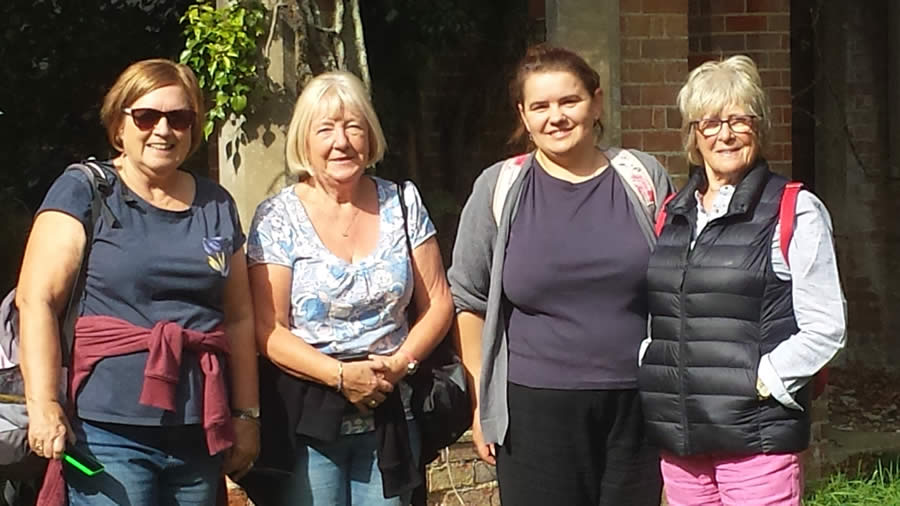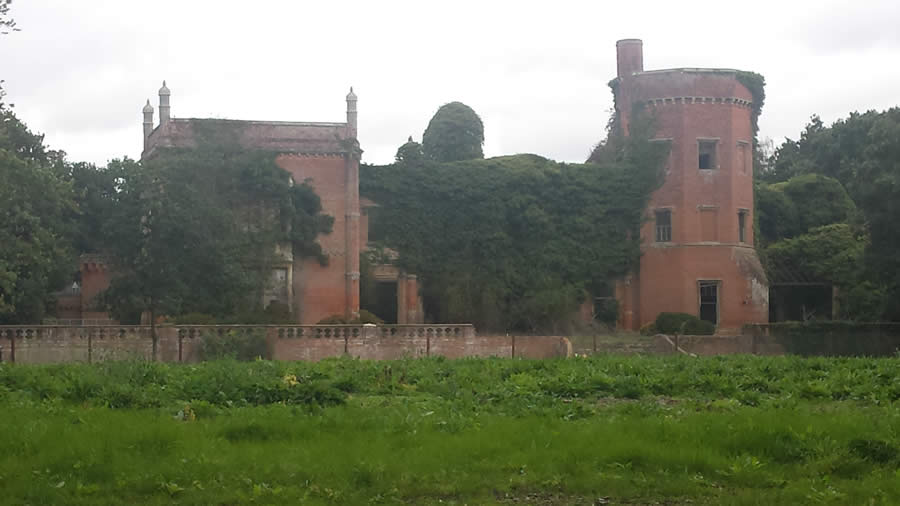by Wendy Mansfield

The original hall was built in 1688 and took the form of a Jacobean Manor House. It was owned by various families including the Drurys, the Burwells and the Davers. It was then purchased by the Rev Roger Kedington in 1792. His daughter Jane married Philip Bennett and they decided to build a new house in the early 1820’s. The house was built in a Tudor / Gothic style. Over the years various generations added to and altered the original building to suit their own needs.
Since 1904 the hall and estate have been in the hands of the Agnew family and Sir George showed us some photos of what the house looked like in its heyday with large garden parties, shooting days and a vast army of estate workers. During World War II the hall was used as a base for operations by the armed forces, as were many others. In September 1940 a German Zeppelin flew over Ipswich and followed the road (now the A14) up to Rougham Airfield. A huge bomb was dropped and the hall received a direct hit. The story goes that normally the butler would be the one to sound the alarm when the air raid alarm could be heard in Bury. It happened to be his night off and he was actually drinking in a pub in Bury. The family would normally take shelter in the cellar but were still in their beds. The bomb went straight down to the cellar where they would most certainly have been killed! As it was there were no casualties which was very fortunate. One theory for the bombing is that the German Luftwaffe were aiming for Rushbrooke Hall which was owned by the Rothschild Family and was also an important operations base.
The Hall has been left in the same state since then and several people asked why it was never rebuilt. Sir George explained that nowadays nobody wants to live in a sprawling Gothic Manor House and the costs would have been prohibitive. As you wander around the ruins of the hall it is possible to imagine how it once must have looked. Some of the walls are in a precarious state and it is not safe to enter the building. The hall is hidden and safely fenced off, only accessible by prior appointment.
We all enjoyed our day and came away with a sense of the history of Rougham Hall.
